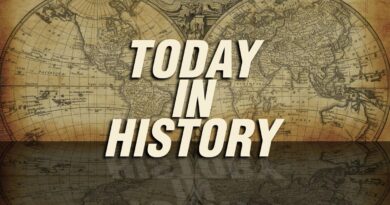On This Day in History — When Nigeria Dared to Dream
When Nigeria Dared to Dream: The Forgotten Revolution of September 2, 1976″
What if we told you that on this very day, long before TikTok trends and internet virality; Nigeria launched one of the most ambitious educational revolutions in African history?
On September 2, 1976, while the world may have been watching Cold War politics and disco balls spin, Nigeria quietly lit the torch of transformation. That day, the military government of General Olusegun Obasanjo launched the Universal Primary Education (UPE) scheme, a visionary effort to offer free, compulsory primary education for every Nigerian child.
It wasn’t just policy; it was poetry in motion.
- A bold national reset.
- A declaration that learning would no longer be a luxury for the privileged few.
- And perhaps, most powerfully, a loud statement that the black child mattered.
The Birth of a Dream: Why UPE Matter
Before the UPE, access to education in Nigeria was wildly uneven. Rural areas were underserved. Millions of children, especially girls, were locked out of classrooms, not by lack of will, but by poverty, tradition, and neglect. The UPE aimed to break that chain.
With a slogan that echoed across school walls, “Education for All by the Year 2000”, the government committed to:
- Building thousands of new primary schools,
- Training and hiring teachers en masse,
- Distributing free textbooks and materials,
- And most radically, abolishing school fees.
Over 6 million pupils were enrolled within the first year. Schools overflowed with children. Communities rallied. Even villages without electricity began to hum with the light of learning.
For the first time, it felt like a real revolution—without guns, but with chalk and slates.
Behind the Chalkboard: Who Made It Happen?
The man at the helm was General Olusegun Obasanjo, Nigeria’s military Head of State at the time. But behind the curtain stood a team of thinkers, technocrats, and educators who believed Nigeria’s development lay not in its oil wells, but in its classrooms.
They studied models from Tanzania, India, and even Scandinavian countries. They consulted UNESCO. They visited communities. And they bet big on the idea that education could transform a nation faster than any road, bridge, or refinery.
And they weren’t wrong.
The Growing Pains: Too Fast, Too Soon?
As powerful as the vision was, the execution faced serious challenges
- Overcrowded classrooms with student–teacher ratios as high as 100:1.
- Untrained teachers, some recruited just weeks before term started.
- Ghost pupils—nonexistent students used to inflate enrolment numbers and siphon funds.
- A shortage of desks, books, even chalk.
- And an urban-rural gap that remained painfully wide.
Many critics argued that the scheme was launched too fast without the infrastructure to support it. Others saw the massive investment as a political strategy to gain public support. Yet even they couldn’t deny the deep social awakening it triggered.
UPE had cracks, but it also had courage.
Ripples Across Africa: Nigeria as a Continental Model
Nigeria wasn’t alone in this journey. Across Africa, post-colonial states were experimenting with mass education. Ghana, Kenya, Tanzania, and Uganda had similar programs. But Nigeria’s UPE stood out for its sheer scale—with the largest population in Africa and the most ethnically and linguistically diverse classrooms.
By launching UPE, Nigeria positioned itself as a model for African educational reform, showing that with political will, colonial legacies could be broken and replaced with homegrown ambition.
Legacy & Lessons: Where Are We Now?
Fast-forward to today. The echoes of UPE still ring through the nation:
- Nigeria now boasts over 60 million primary school-aged children.
- The Universal Basic Education (UBE) program, introduced in 1999, is a direct descendant of the UPE.
- Government and private sectors are investing in teacher training, digital learning, and community schools.
But challenges persist:
- Over 10 million Nigerian children are still out of school, one of the highest figures globally.
- Public schools often lack quality infrastructure and accountability.
- Rural girls and children in conflict zones face staggering educational disadvantages.
So yes, the dream lives, but it needs rekindling.
Final Thoughts: More Than a Date, a Destiny
September 2, 1976, is more than a historical footnote. It’s a reminder that when a nation invests in its children, it invests in its soul. The UPE wasn’t perfect, but it was powerful. It dared to believe that a black child in Borno or Bayelsa deserved the same chance at success as anyone else in the world.
As we remember that day, let’s ask:
- What if we dreamed that big again?
- What if we didn’t wait for miracles, but made policies that became miracles?
- What if education wasn’t just a line in a manifesto—but a national obsession?
Because if Nigeria is ever to rise fully, it won’t be from oil or politics.
It will rise on the back of educated children who believe they can change the world.
Read Also: 47 Million Pupils, Teachers to Get Free Laptops and Tablets From FG Initiative
Content Credit | Olaoluwa Ayomide
Image Credit | google.com




